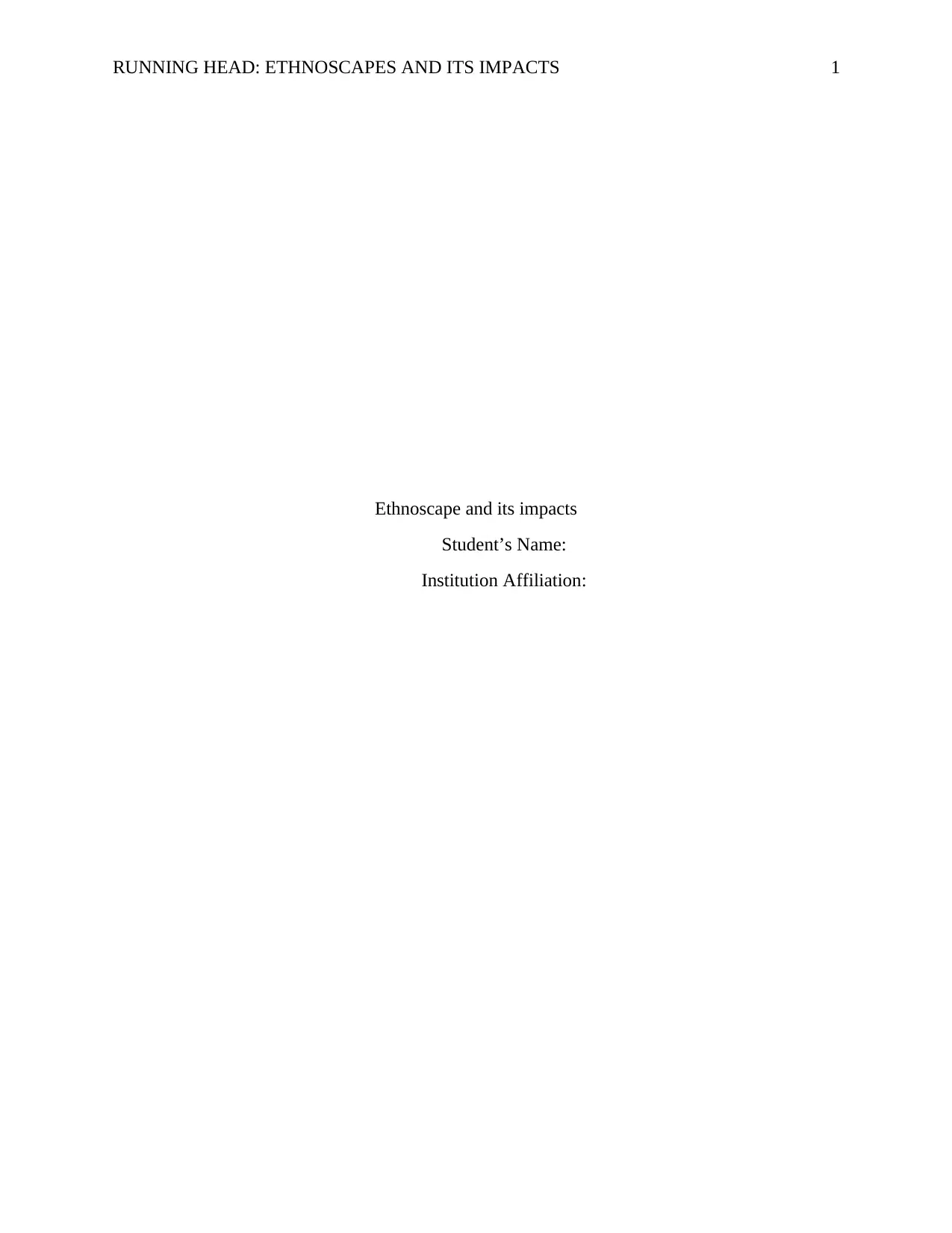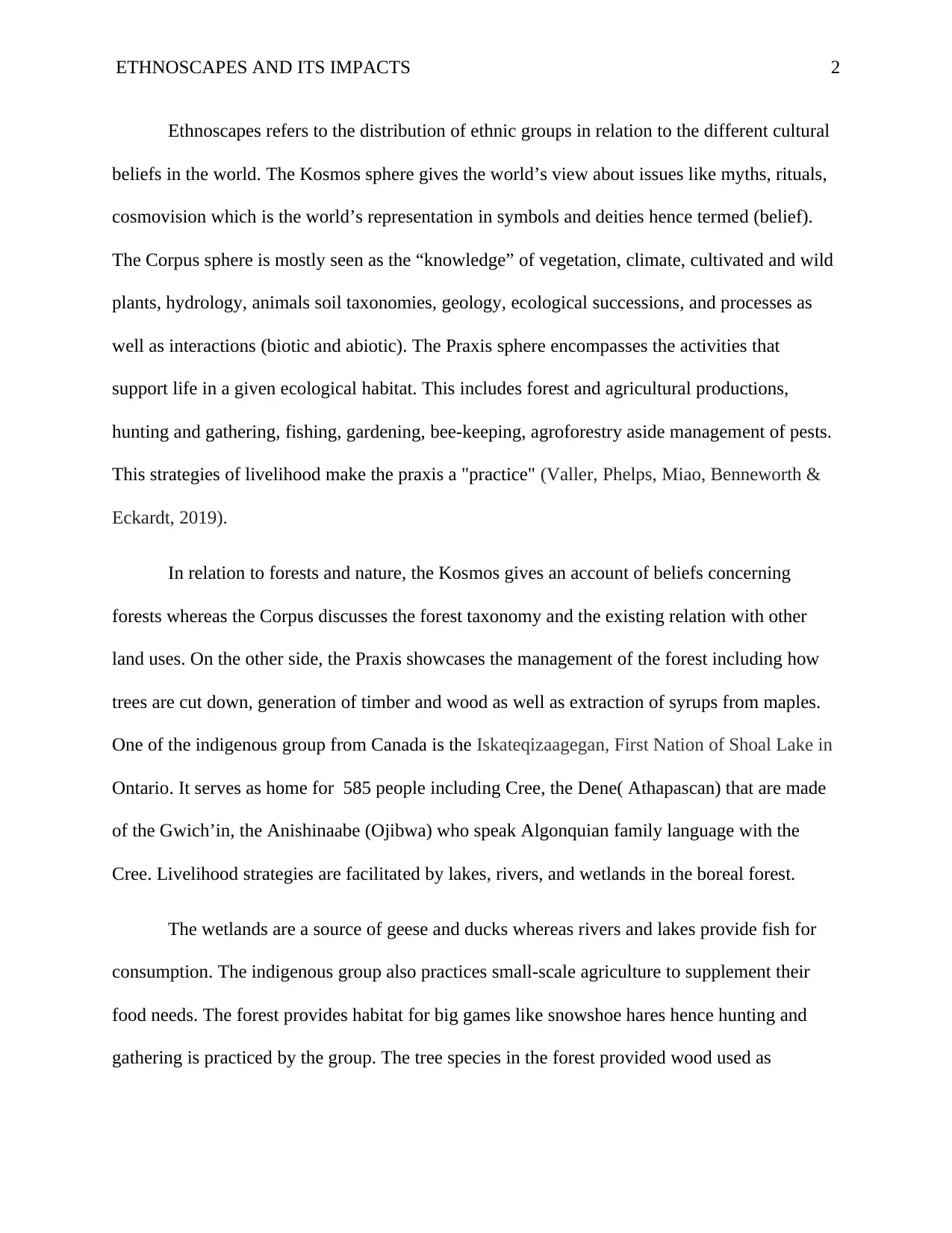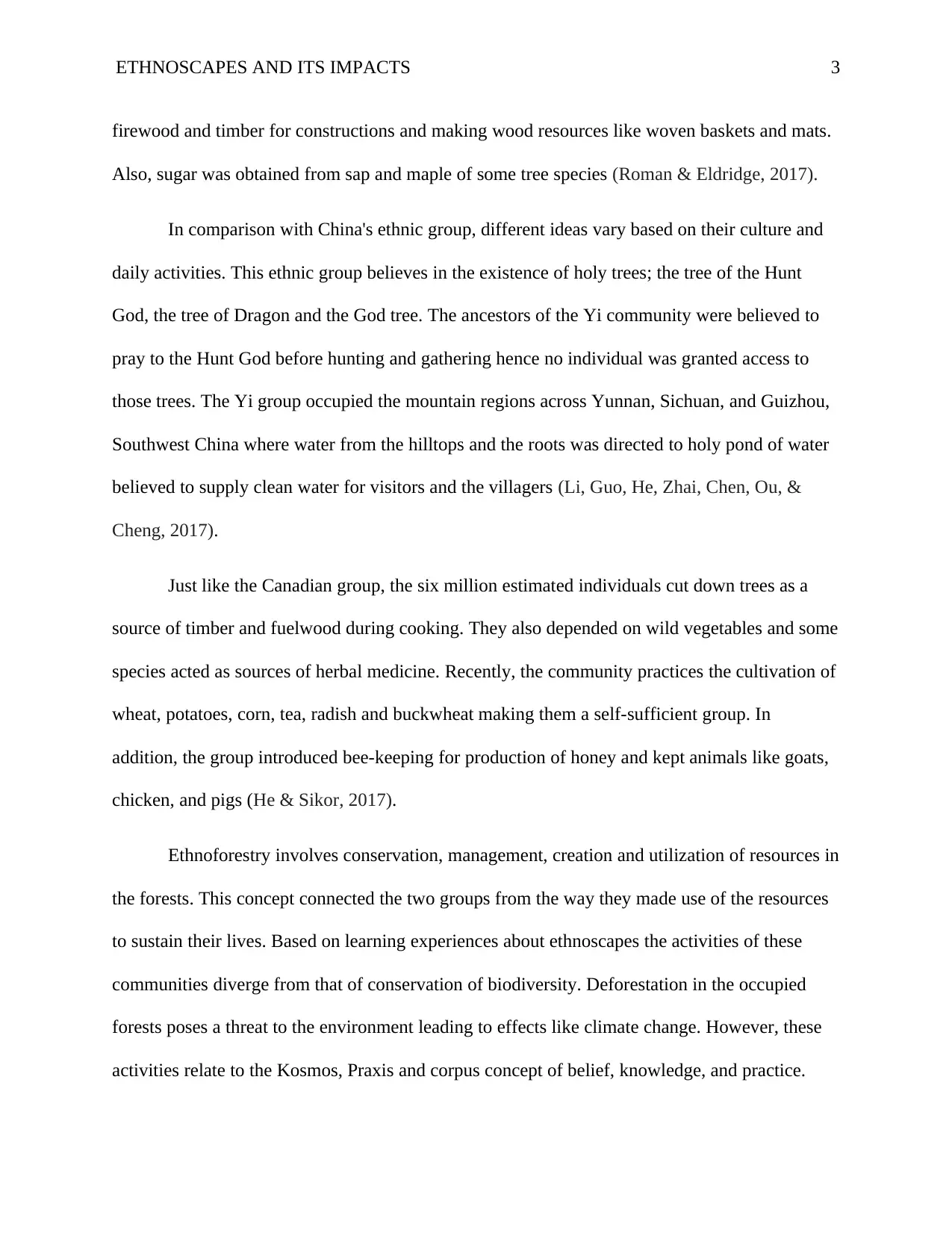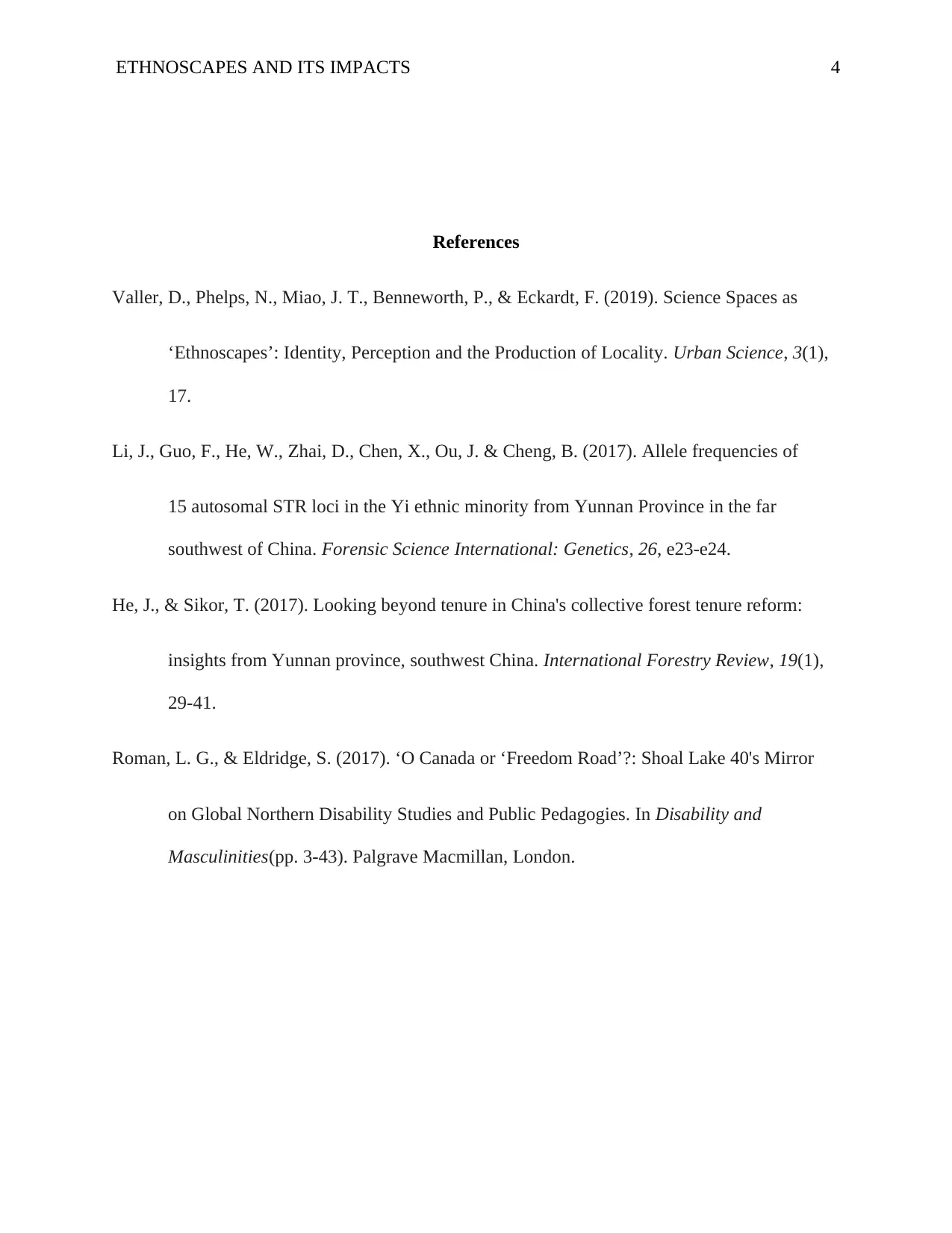A Comparative Analysis of Ethnoscapes and Forest Management
VerifiedAdded on 2023/01/09
|4
|964
|31
Report
AI Summary
This report explores the concept of ethnoscapes, which refers to the distribution of ethnic groups in relation to their cultural beliefs and practices concerning forests and nature. It examines the Kosmos (beliefs), Corpus (knowledge), and Praxis (practices) spheres, illustrating how different ethnic groups, such as the First Nation of Shoal Lake in Canada and the Yi people in China, interact with their forest environments. The report highlights how these groups utilize forest resources for livelihood, including timber, fuelwood, and medicinal plants, while also acknowledging the impacts of deforestation and the importance of ethnoforestry in conservation and management. A comparative analysis is presented, contrasting the cultural and ecological perspectives of the two ethnic groups, and emphasizing the dynamic and complex relationship between humans and forests. The study concludes by underscoring the need to consider cultural values in forest management to promote biodiversity conservation.
1 out of 4





![[object Object]](/_next/static/media/star-bottom.7253800d.svg)